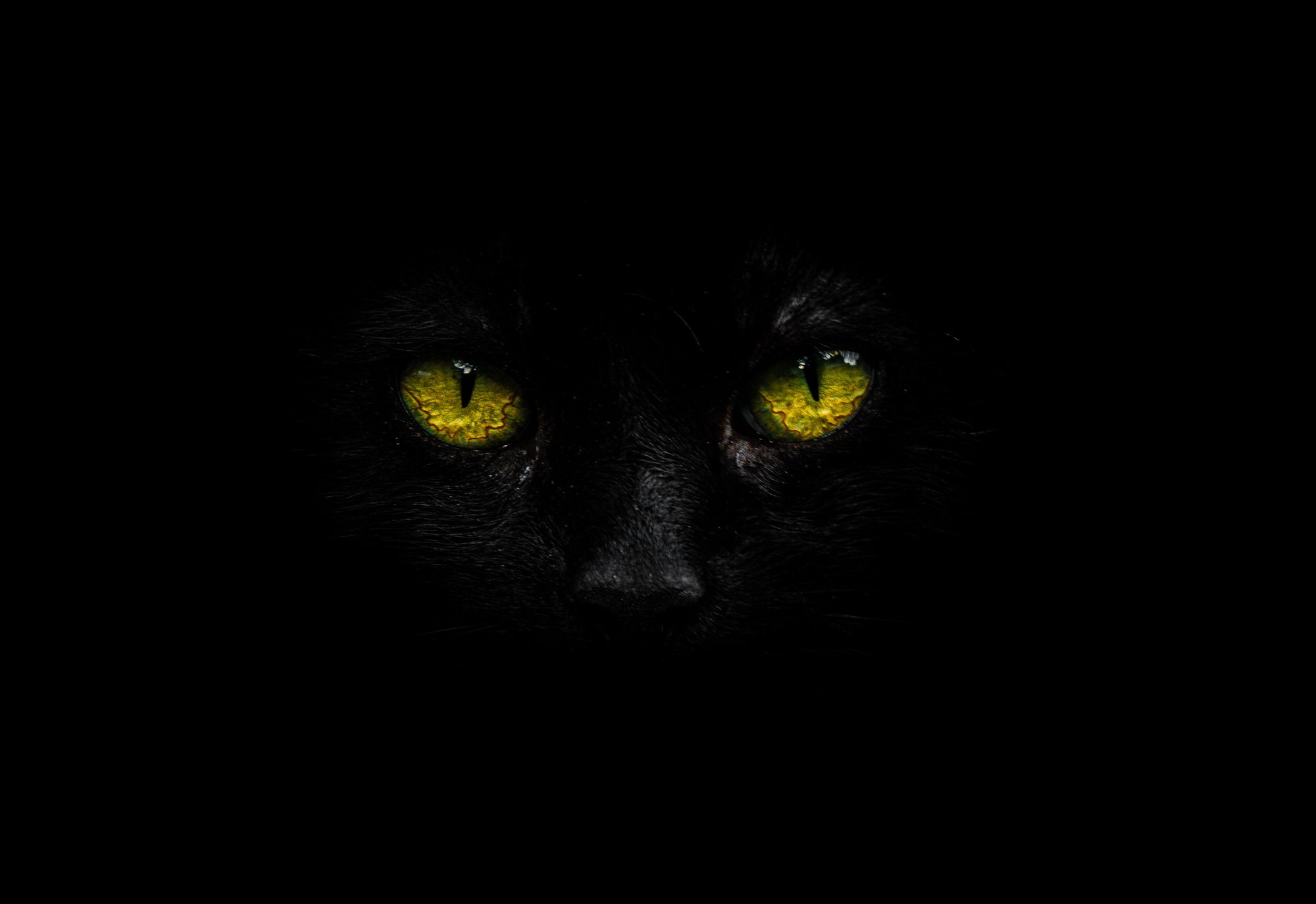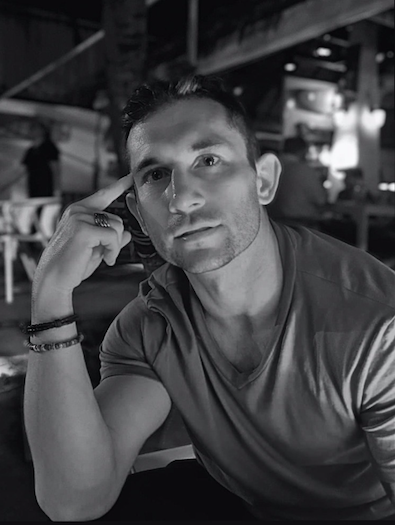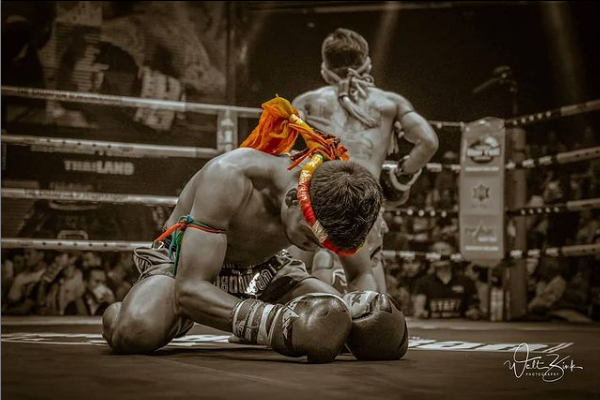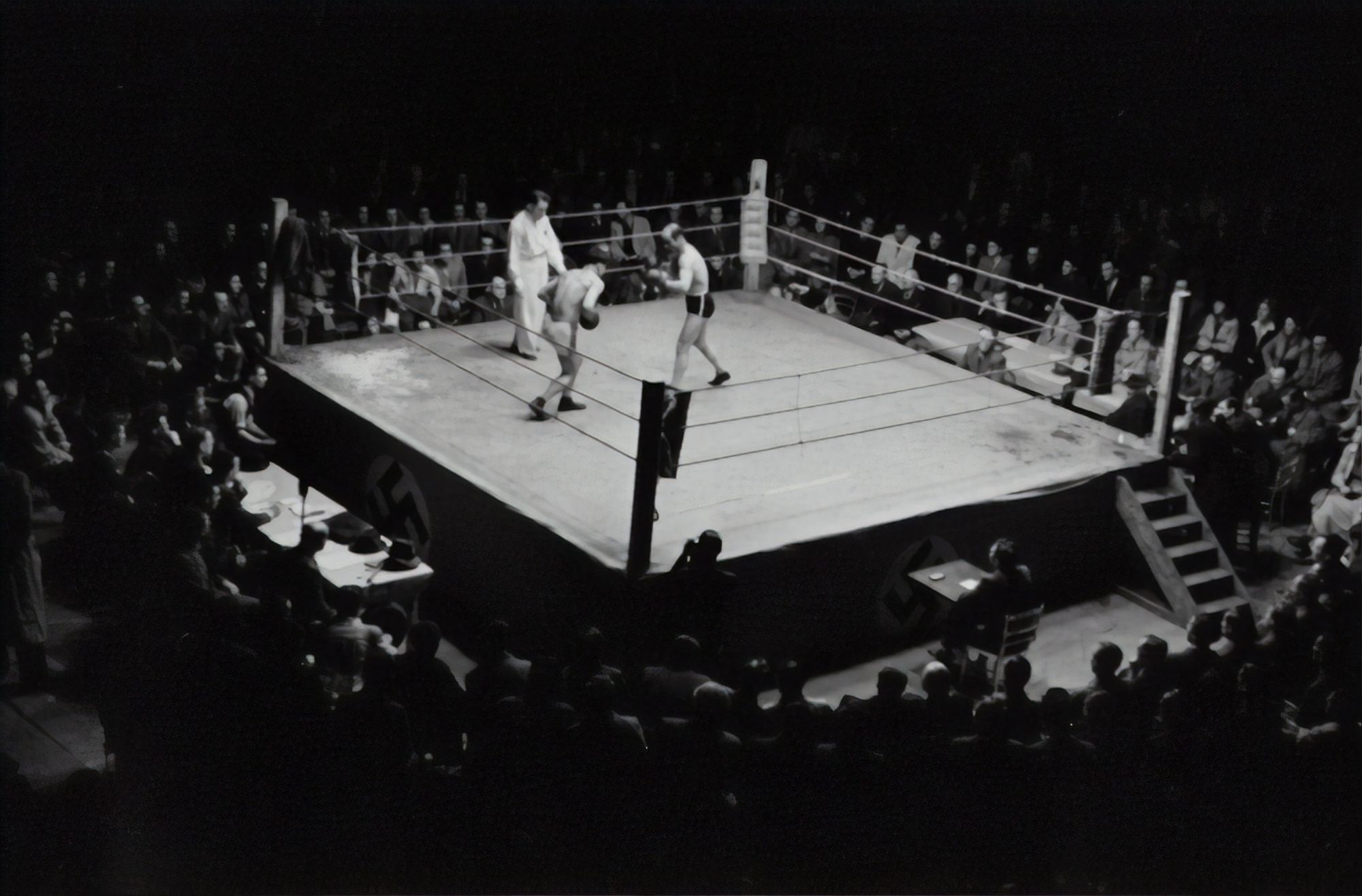Decoding Edgar Allan Poe's most elusive short story.
"FOR the most wild, yet most homely narrative which I am about to pen, I neither expect nor solicit belief. Mad indeed would I be to expect it, in a case where my very senses reject their own evidence."
Those unfamiliar with this tale are encouraged to read The Black Cat at the link below before reading this essay as it relies heavily on the reader's basic familiarity with the text.

Before his final downfall, the narrator of The Black Cat plunges into emotional turmoil and moral decay during which he abuses his pet animals, kills his favorite cat, Pluto, and eventually murders his wife.
He claims the downward turn in his disposition to be the result of “Fiend Intemperance,” while his abuse of his pets to be the byproduct of his “ill-temper.” He first assaults Pluto, so he claims, because it “avoided [his] presence,” then kills it because “the spirit of PERVERSENESS” urged him to do so.
The narrator's description of his story as "nothing more than an ordinary succession of very natural causes and effects" has bewildered readers intent on discerning logic in Poe's "most wild, yet most homely narrative." Hence scholars have focused on deducing the narrator's motive.
James Gargano provides an in-depth psychological analysis of the narrator’s childhood suggesting an “unhealthy over-development of the voluptuary side of his nature.” William Crisman proposes the narrator’s crimes stem from a jealousy for the cat whom the narrator believes is a rival for his wife. Daniel Hoffman argues that the story is an autobiographical account of Poe’s own sexual frustrations which drive his actions. Yet despite the amount of scholarship of The Black Cat, critics have struggled to provide a reasonably logical explanation to the “series of mere household events.”
Error in its interpretation has arisen by efforts to provide explanation as to what caused the narrator’s crimes and by not focusing on the events themselves. Repeatedly throughout the story’s first paragraph, as Susan Amper points out, the narrator implies “the story should make sense.”
All necessary clues for its interpretation lie in these opening lines but have gone unnoticed under the assumption that the opening paragraph is the voice of the narrator.
Poe makes it clear in the very first sentence that the narrative which he is “about to pen,” is his “most homely.” "Homely" implying its simplicity and "most" implying its relation to his other works. He then informs the reader twice that his tale should not be read literally.
I neither expect nor solicit belief. Mad indeed would I be to expect it, in a case where my very senses reject their own evidence.
Poe quite explicitly informs the reader that this story is a riddle, and if read strictly as a metaphor, keeping in mind its simplicity, it may be reduced to “nothing more than an ordinary succession of very natural causes and effects”
"Hereafter, perhaps, some intellect may be found which will reduce my phantasm to the commonplace--some intellect more calm, more logical, and far less excitable than my own, which will perceive, in the circumstances I detail with awe, nothing more than an ordinary succession of very natural causes and effects."
The solution to this riddle is through simple word play thus transforming The Black Cat into an allegory of addiction.
By replacing words such as “animals” with “alcohol,” the narrator’s account of domestic violence is metaphorically transformed into a vivid, accurate narration of alcoholic addiction and the very natural effects it has upon him.
"I was especially fond of animals, and was indulged by my parents with a great variety of pets. With these I spent most of my time, and never was so happy as when feeding and caressing them. This peculiarity of character grew with my growth, and in my manhood, I derived from it one of my principal sources of pleasure."
Animals = Alcohol
Feeding, Caressing = Drinking
Pets = Alcoholic beverages, Substances
Now reads:
"I was especially fond of [alcohol] and was indulged by my parents with a great variety of [alcoholic beverages]. With these I spent most of my time, and never was so happy as when [drinking]. This peculiarity of character grew with my growth, and in my manhood, I derived from it one of my principal sources of pleasure."
Poe's wordplay remains consistent throughout the tale.
Animals=Alcohol
Feeding, Caressing = Drinking
Pets = Alcoholic beverages
Cat = Hard-Liquor.
Birds, gold-fish, dog, rabbits, monkey = Beer, wine, ale, etc.
Maltreating, Abusing, Ill-using, Neglecting = Abusing [substances]
Alpha Alcoholism
“A purely psychological continual dependence or reliance upon the effect of alcohol to relieve bodily or emotional pain” (Jellinek 36).
The narrator’s description of his childhood holds notable significance in relation to alcoholism. His “tenderness of heart” is what Jellinek notes as “the most common form of pre-alcoholic vulnerability; a low capacity for handling tensions” (63). The tensions created by the ridicule of his peers coupled with the “docility” of his disposition parallel Jellinek’s statement that a “person who is suffering from stresses and lacks the ability to cope with them is more ‘susceptible’ or docile to use of tension-reducing substances, such as alcohol” (44-5, my italics).
Note the narrator's description of this habit as a "peculiarity of character." This is an odd characterization of one's affinity for pets, but quite logical if referring to alcoholic dependence. As alcoholics “in the beginning of their drinking careers…undoubtedly show a greater desire for the tension-reducing effects of alcoholic beverages" (Jellinek 43), the narrator “derives from it one of [his] principal sources of pleasure" (Poe).
He marries a woman who possesses “a disposition not uncongenial” with his own i.e. similar fondness for alcohol, and “observing [his] partiality for [alcoholic beverages]," his wife obtains a variety for the home.
"We had birds, gold-fish, a fine dog, rabbits, a small monkey, and a cat."
"We had beers, wines, ales, and liquor."
"In speaking of his intelligence, my wife... made frequent allusion to the ancient popular notion, which regarded all black cats as witches in disguise."
Gamma Alcoholism
“Alpha alcoholism may develop into gamma alcoholism which is defined as “(1) acquired increased tissue tolerance to alcohol, (2) adaptive cell metabolism, (3) withdrawal symptoms and ‘craving,’ i.e., physical dependence, and (4) loss of control” (Jellilnek, 1946 and 1952b qtd in Jellinek 1960; 37).
The narrator’s increased tolerance lead him to rely on a higher-proof substance for the desired euphoria, and he begins regularly indulging in his “favorite [alcoholic beverage].”
"Pluto--this was the [liquor]'s name--was my favorite [alcoholic beverage]. I alone [drank] [it], and [liquor] attended me wherever I went about the house. It was even with difficulty that I could prevent [liquor] from following me through the streets."
As he grows “more moody, more irritable, more regardless of the feelings of others” he is describing a personality change that Wexberg refers to as an “alcoholic personality” produced by “prolonged excessive drinking,” marked by a “callousness toward suffering caused by them” and “indifference toward human relations” among others (qtd. in Jellinek 65-6).
"My [alcoholic beverages], of course, were made to feel the change in my disposition. I not only [abused], but [abused] them. For [liquor], however, I still retained sufficient regard to restrain me from [abusing] [it], as I made no scruple of [abusing] the [wine, ale, beer], when by, accident, or through affection, they came in my way. But my disease grew upon me--for what disease is like Alcohol!--and at length even Pluto [hard liquor]... began to experience the effects of my ill temper [abuse]."
Gargano points out his moral decline is in direct correlation to “intemperate self-indulgence,” but fails to recognize his decline is also in direct correlation to his friendship with the cat, Pluto. The two are one in the same which the narrator openly states in his writing.
Loss of Control
“‘Loss of control’ denotes the stage in the development of their drinking history when the ingestion of one alcoholic drink sets up a chain reaction so that they are unable to adhere to their intention to ‘have one or two drinks only’ but continue to ingest more and more—often with quite some difficulty and disgust—contrary to their volition” (Jellinek 41).
Note that Poe's use of language in his treatment of the animals -- "abusing, ill-using, maltreating" – are no different than how one may refer to over-indulgence of alcohol. When referring to more extreme alcoholic indulgence i.e. loss of control however, his language use shifts to "cutting, hanging, killing."
The narrator describes his first loss of control when he returns home “much intoxicated, from one of [his] haunts about town." Poe gives explicit clues to the reader however stating, “a fiendish malevolence, gin-nurtured, thrilled every fibre of my frame.”
"I took from my waistcoat-pocket a penknife, opened it, grasped the poor beast (liquor) by the throat (craving), and deliberately cut one of its eyes from the socket (abuse)! (My parenthesis)"
The alcoholic’s “starting a new bout is ascribable to an impulse” which the alcoholic himself often does not understand (Jellinek 42), and the narrator admits his confusion and grief at the “evident dislike on the part of a [substance] which had once so loved me."
In the meantime the cat slowly recovered.
Here is a momentary shift in the narrator’s account during which he describes the cat’s recovery in reference to his own.“The alcoholic now engages in bouts terminated by such severe intoxication that he cannot continue drinking; he recovers only after several days of care” (Jellinek 140).
“The loss of control extends over a given drinking bout, after which the gamma alcoholic is able to ‘go on the water wagon’ i.e. to abstain from alcoholic beverages for shorter or longer periods” (Jellinek 42). The narrator’s impulse to drink returns, and he engages in another, still more extreme alcohol binge metaphorically represented in the text as hanging Pluto.
"This spirit of perverseness, I say, came to my final overthrow. It was this unfathomable longing of the soul to vex itself--to offer violence to its own nature--to do wrong for the wrong's sake only--that urged me to continue and finally to consummate the injury I had inflicted (abuse) upon the unoffending brute (liquor). (My parenthesis)"
Note the object of his destruction: “longing of the soul to vex itself—to offer violence to its own nature." The narrator is describing self-destruction, not the destruction of a cat.
A gap appears in the narrator's account after "hanging Pluto" during which his house catches fire. He visits the ruins the day after to discover a crowd has gathered there. There is an image of the cat on the last remaining wall. The narrator then offers a bewildering hypothesis for the potential cause of such an apparition:
He had hung Pluto in the adjacent garden, and someone had thrown the cat into the home during the fire. The cat had been pressed into the plaster, and the ammonia from the carcass resulted in the image.
Now consider this hypothesis but with substituted language.
"The [hard liquor]…had been [finished] in a garden adjacent to the house. Upon the alarm of the fire, this garden had been immediately filled by the crowd—by someone of whom the [bottle] must have been cut from the tree and thrown through an open window, into my chamber. This had probably been done with the view of arousing me from sleep. The falling of other walls had compressed the [bottle] of my cruelty into the substance of the freshly spread plaster; the lime of which, with the [alcohol] from the [bottle] had then accomplished the picture as I saw it."
This is still a bewildering explanation but does have a certain and undoubtedly greater logic to it. Worth noting is that Poe italicizes “ammonia” in his text thus drawing attention to its potential code: Alcohol and Ammonia are both 7 letters.
Most notably is the narrator's stated “wonder” and “terror” at the image. Susan Amper accurately points out its significance as his fear of “the threat of exposure.” The burning of his house coupled with the bottles discovered signify a complete destruction and final exposure of his addiction.
Delta Alcoholism
“Delta alcoholism shows the first three characteristics of gamma alcoholism as well as a less marked form of the fourth characteristic—that is, instead of loss of control there is inability to abstain” (Jellinek 38).
With my aversion to this [liquor], however, its partiality for myself seemed to increase.
The narrator's prior disaster deters him from further consumption for some time, but he inevitably begins to “regret the loss of the [alcohol]” (Poe), which “fills a void, an emptiness that other people—including the alcoholic—cannot fill” (Denzen 96).
"I went so far as to regret the loss of the [alcohol], and to look about me, among the vile haunts which I now habitually frequented, for another [substance] of the same species, and of somewhat similar appearance, with which to supply its place...my attention was suddenly drawn to some black object, reposing upon the head of one of the immense hogsheads of gin, or of rum... I approached it, and touched it with my hand. It was a black [liquor]--a very large one--fully as large as Pluto, and closely resembling him in every respect but one."
Here Poe is most likely referring to Laudanum, a mixture of alcohol and opium, which Poe was known to use (Patterson).
"The [Laudanum] evinced a disposition to accompany [him],” but he quickly finds his reaction to the new substance to be “just the reverse of what [he] had anticipated” i.e. an inability to control.
Although “remembrance of [his] former deed of cruelty i.e. loss of control, prevent[s] [him] from physically abusing it,” his will power eventually corrodes as the substance’s “partiality for [himself] seemed to increase.” Despite his best efforts to avoid abusing Laudanum, its power over him increases, and he recognizes its addictive qualities are no different than liquor’s, claiming “it had, at length, assumed a rigorous distinctness of outline” (Poe).
“The [substance] left me no moment alone.”
Relapse
"One day she accompanied me, upon some household errand, into the cellar of the old building...The cat followed me down the steep stairs, and, nearly throwing me headlong, exasperated me to madness. Uplifting an axe... I aimed a blow at the animal... But this blow was arrested by the hand of my wife... I withdrew my arm from her grasp and buried the axe in her brain."
As is consistent of this entire interpretation, the cat is the substance thus the source of his intoxication and subsequent loss of balance. Abuses of the cat are abuses of the substance.
The wife's attempts to stop him and the actual murder may be read literally, but of greater importance is its significance; the event epitomizes the severity of his addiction; nothing may interfere in his obsession.
"This hideous murder accomplished, I set myself forthwith, and with entire deliberation, to the task of concealing the body."
Post-murder we see an interesting shift take place and cause for considerable debate among scholars.
Daniel Hoffman argues a symbolic transfer occurs at this point in which the cat = the wife. A transfer does occur, but error lies in the more literal interpretation of Poe's story. The Black Cat is simply not meant to be read literally. There is no cat; only alcohol.
While the wife's body does appear to become synonymous with the cat, distinction lies in what these two objects represent.
Cat = Liquor/ Laudanum
Wife (post-murder) = Alcoholism/ Addiction
The narrator commits himself to suppressing his addiction i.e. burying his wife. Finding the perfect remedy, he becomes free of his addiction which quickly gives rise to hubris:
"The second and the third day passed, and still my tormentor came not. Once again I breathed as a free man. I looked upon my future felicity as secured."
But temptation soon appears to test his freedom (and hubris).
Police = Alcoholic Temptation/ Mental Obsession
House = Sobriety
"Upon the fourth day..., a party of the police (temptation) came, very unexpectedly, into the house, and proceeded again to make rigorous investigation of the premises... My heart beat calmly as that of one who slumbers in innocence... I burned to say if but one word, by way of triumph, and to render doubly sure their assurance of my guiltlessness... "By the bye, gentlemen, this--this is a very well-constructed house (sobriety)... I may say an excellently well-constructed house (sobriety)." (My parenthesis)"
The narrator's mistaken confidence in his sobriety and desire “to prove he is the master of his will” ultimately leads to his relapse (Jellinek).
"Through the mere frenzy of bravado," he tests his control once again (Poe).
But may God shield and deliver me from the fangs of the Arch-Fiend (Addiction)!
Craving takes over, "a dozen stout arms were tolling at the wall," and his sobriety gives way to alcoholic relapse and self-destruction.
It (Sobriety) fell bodily.
Conclusion
Read strictly as allegory, The Black Cat is a very detailed, vivid, and above all, accurate account of alcoholic progression. The narrator’s “early fondness” for its soothing effects, followed by an increasing “partiality” to alcohol, to his inability to “avoid” it, and finally to his ultimate downfall all mark stages in the disease of addiction.
Poe’s “most wild, yet most homely” story is in fact a temperance tale. His motivation in writing such a tale may have been drawn from a variety of sources. “Over 12 percent of the novels published in America in the 1830’s dealt with temperance,” and is thus very likely that Poe wrote The Black Cat "as a response to the new attitudes that were circulating” (Matheson 70).
Even more likely is the tale was inspired by “the greatest of all problems in Poe’s biography, his drinking” (Wagenecht 30). “Poe’s tales are largely autobiographical,” and his efforts to write a vivid account of the problem only seem natural (Gargano).
The Black Cat was written in 1842 (H 5: 143-55 qtd. In Phillips 131). It was this same year that his wife, Virginia Clemm, ruptured a blood vessel and fell victim to Tuberculosis which would later take her life. The onset of her illness marked the beginning of Poe’s most turbulent descent into alcoholism, and at this time he wrote, “I took leave of her forever and underwent all the agonies of her death…During these fits of absolute unconsciousness I drank, God only knows how often or how much” (Phillips 110).
Hence Poe’s story of a man’s descent into alcoholism must have been motivated by his own parallel struggles occurring during the same year in which he wrote it.
One could argue that Poe could not have written such an accurate, insightful account of alcoholism in the midst of his own illness. Phillips has shown however, that “there were at least three specific sources that Poe could have consulted for an understanding of his own history of drinking and illness,” most notably Isaac Ray’s, A Treatise on the Medical Jurisprudence of Insanity (112).
Ray’s work provides a description of alcoholism and its symptoms which often correlate as Phillips points out, with aspects of Poe’s tale. For example, “Ray reports that ‘under the influence of these terrible apprehensions’ the sufferer ‘sometimes murders his wife…’” (Phillips 135 and Ray 302). And as Matheson observes, “when he confesses that his ‘disease grew upon’ and adds for emphasis, ‘for what disease is like Alcohol!’ he is utilizing rhetoric taken verbatim from the temperance literature of his day” (76).
Therefore, Poe’s inclination and ability to write such an accurate account of alcoholism is entirely plausible.
I encourage the reader of this interpretation to re-read The Black Cat and put out of mind entirely the idea of the cat and other animals. Read it as a metaphor and nothing more than an ordinary succession of alcoholism's very natural causes and effects.

Works Cited
Amper, Susan. “Untold Story: The Lying Narrator in ‘The Black Cat’”
Crisman, William. “’Mere Household Events’ in Poe’s ‘The Black Cat.’” Studies in American Fiction, 12 (1984): 87-90.
Denzin, Norman K. The Alcoholic Self. Newbury Park, CA: SAGE Publications, 1987.
Gargano, James W. “’The black Cat’: Perverseness Reconsidered,” Texas Studies in Literature and Language, 2 (1960), 172-78.
Hoffman, Daniel. PoePoePoePoePoePoePoe. Garden City, NY: Doubleday, 1972.
Jellinek, E.M. The Disease Concept of Alcoholism. New Haven: Hillhouse Press: 1960.
Matheson, TJ. Poe’s ‘The Back Cat’ as a Critique of Temperance Literature. Mosaic 1986; 19: 69-81.
Patterson, Robert. Once upon a midnight dreary: the life and addictions of Edgar Allan Poe.
Phillips, Elizabeth. Edgar Allan Poe: An American Imagination. “Mere Household Events: The Metaphysics of Mania.” Port Washington, NY: Kennikat Press Corp. 1979.
Poe, Edgar Allan. The Complete Tales and Poems of Edgar Allan Poe. New York: Random House, Inc. pg. 223-230
Wagenknecht, Edward. Edgar Allan Poe: The Man Behind the Legend. New York: Ocford University Press: 1963





